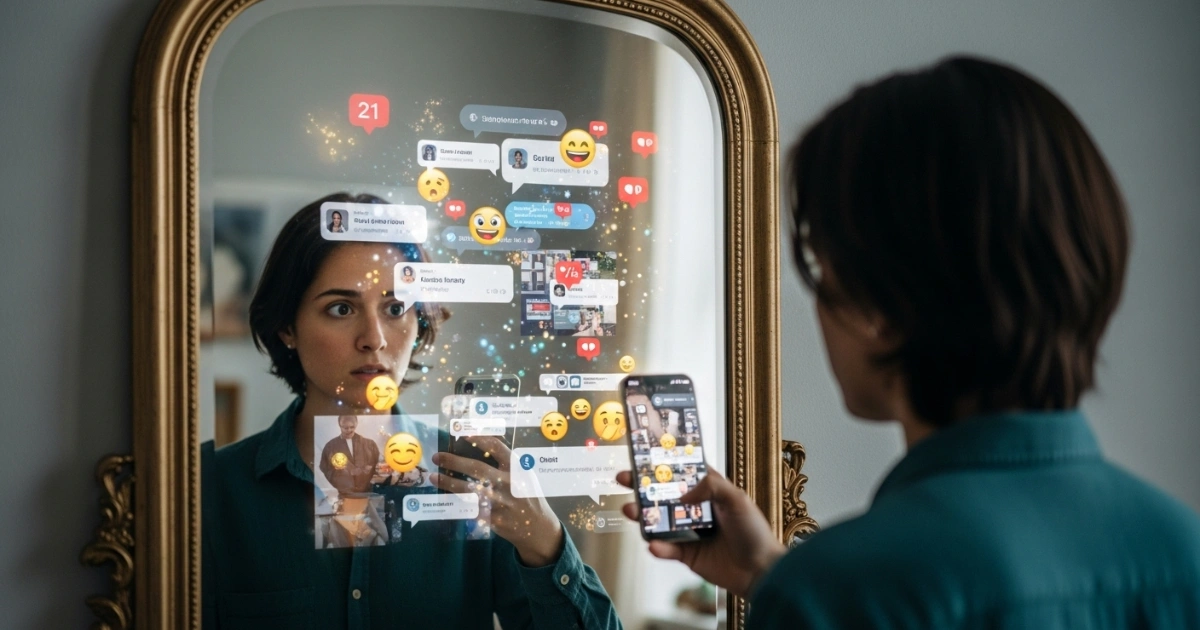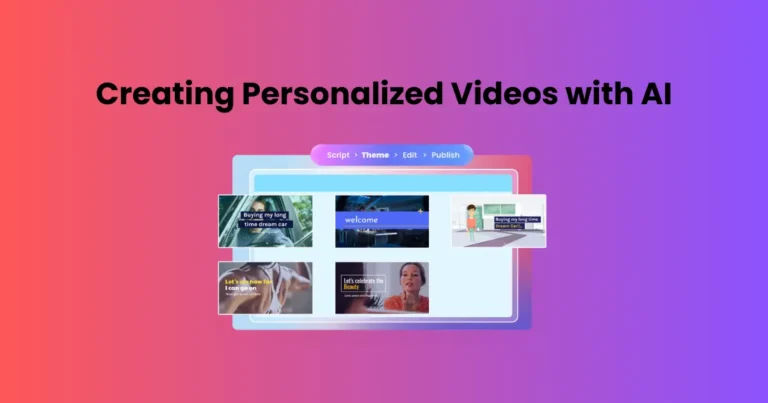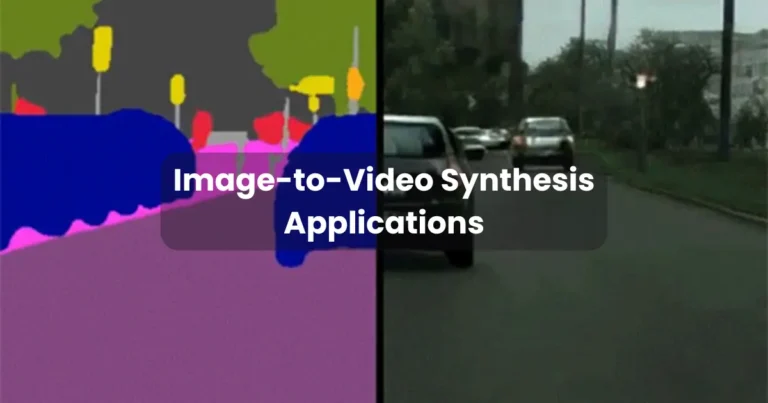Visual Mirror on Social Media: Identity & Trend

Contents
- 1 What Is the Visual Mirror on Social Media?
- 2 Why the Visual Mirror Matters
- 3 The Psychology Behind the Visual Mirror
- 4 How to Curate Your Visual Mirror on Social Media
- 5 Platform-Specific Strategies for the Visual Mirror
- 6 The Role of Analytics in Refining Your Visual Mirror
- 7 Challenges of the Visual Mirror
- 8 Future Trends in the Visual Mirror
- 9 Tips for Long-Term Success
The visual mirror on social media reflects who we are, how we want to be seen, and how others perceive us in the digital realm. Social media platforms like Instagram, TikTok, and Pinterest have transformed into virtual galleries where users craft their identities through carefully curated images, videos, and stories. This phenomenon, often called the “visual mirror,” allows individuals to project their personalities, values, and aspirations to a global audience. In this article, we’ll dive into the concept of the visual mirror, explore its impact on personal and collective identities, and provide actionable tips to maximize its potential. By understanding this digital reflection, you can harness social media’s power to build authentic connections, boost engagement, and create a lasting online presence.
What Is the Visual Mirror on Social Media?
The visual mirror on social media refers to the curated collection of visual content—photos, videos, reels, and stories—that users share to represent themselves online. Unlike a physical mirror, which shows an unfiltered reflection, this digital mirror is highly editable. Users can enhance images, apply filters, or stage scenes to align with their desired image. For instance, Instagram’s grid layout acts as a canvas where each post contributes to a cohesive narrative about a person’s life, values, or brand.
Moreover, this mirror isn’t just personal—it’s interactive. Followers, likes, and comments shape how users perceive their reflection. According to a 2023 study by Pew Research, 64% of social media users say their online presence significantly influences their self-image. Consequently, the visual mirror becomes a dynamic interplay between self-expression and external validation, making it a powerful tool for identity construction.
Why the Visual Mirror Matters
The visual mirror on social media matters because it shapes how individuals and brands are perceived in an increasingly digital world. Here’s why it’s significant:

1. Identity Construction
Social media allows users to craft their identities with precision. By selecting specific Epithets specific images or videos, users project idealized versions of themselves. For example, a fitness enthusiast might share workout routines to emphasize discipline, while a food blogger showcases culinary creations to highlight creativity. This curated reflection influences how others view them.
2. Cultural Influence
The visual mirror reflects and amplifies cultural trends. Platforms like TikTok drive viral challenges, aesthetics, and fashion trends, shaping collective identities. For instance, the #CottageCore trend on Instagram popularized rustic, pastoral imagery, influencing millions to adopt similar visual styles.
3. Engagement and Connection
A well-crafted visual mirror fosters engagement. Consistent, authentic visuals attract followers who resonate with your message. For example, brands like Nike use powerful imagery to inspire, creating emotional connections with their audience.
4. Personal Branding
For professionals and influencers, the visual mirror is a branding tool. A cohesive aesthetic—such as minimalist or vibrant—helps establish a recognizable identity. According to Hootsuite, brands with consistent visuals see 3.5 times more engagement than those without.
The Psychology Behind the Visual Mirror
The visual mirror on social media taps into psychological needs for self-expression and validation. Humans naturally seek to belong and be understood, and social media amplifies this by offering instant feedback. However, this can lead to challenges:

- Comparison Culture: The polished visuals of others can trigger feelings of inadequacy. A 2022 study by the American Psychological Association found that heavy social media use correlates with lower self-esteem among young adults.
- Authenticity vs. Perfection: Users often face pressure to present perfect lives, which can distort their visual mirror. Balancing authenticity with aspiration is key to maintaining trust with followers.
To counter these challenges, focus on genuine content. Share behind-the-scenes moments or personal stories to humanize your mirror, fostering deeper connections.
How to Curate Your Visual Mirror on Social Media
Creating an effective visual mirror requires strategy and intention. Here are actionable tips to optimize your digital reflection:

1. Define Your Aesthetic
Choose a consistent visual style that reflects your personality or brand. For example, use a specific color palette or filter to create a cohesive look. Tools like Canva or Adobe Lightroom can help you achieve this.
2. Prioritize Quality Content
High-quality visuals stand out. Invest in good lighting, composition, and editing. According to Sprout Social, posts with high-resolution images receive 2.3 times more engagement than low-quality ones.
3. Engage with Your Audience
Respond to comments and messages to build community. Ask questions in captions to encourage interaction. For instance, a travel blogger might ask, “What’s your dream destination?” to spark conversation.
4. Use Storytelling
Craft narratives through your visuals. A sequence of images or a video series can tell a compelling story, keeping followers engaged. For example, a fashion influencer might showcase a “day in the life” series to highlight their style.
5. Leverage Trends
Stay updated on platform-specific trends. For instance, TikTok’s short-form videos thrive on quick, engaging content, while Pinterest favors detailed, inspirational imagery. Use tools like Google Trends to identify popular topics.
6. Optimize Posting Times
Post when your audience is most active. Analytics tools like Instagram Insights can reveal peak engagement times. Typically, early mornings and evenings see higher activity.
Platform-Specific Strategies for the Visual Mirror
Each social media platform offers unique opportunities to shape your visual mirror. Here’s how to maximize each:

- Focus: Aesthetic grids and stories.
- Tips: Use Reels for dynamic content and Stories for real-time updates. Hashtags like #OOTD or #TravelGram boost discoverability.
- Example: A lifestyle blogger might post a grid of curated outfits and use Stories to share daily routines.
TikTok
- Focus: Short, engaging videos.
- Tips: Leverage trending sounds and effects. Keep videos under 30 seconds for maximum impact.
- Example: A makeup artist can create a time-lapse transformation video using a viral audio clip.
- Focus: Inspirational, high-quality images.
- Tips: Create pin-worthy graphics with tools like Canva. Use descriptive titles like “10 Cozy Fall Decor Ideas.”
- Example: A home decor enthusiast might pin mood boards showcasing seasonal aesthetics.
YouTube
- Focus: In-depth video content.
- Tips: Optimize thumbnails and titles for clickability. Use end screens to promote related content.
- Example: A tech reviewer might create a detailed unboxing video with clear visuals and narration.
The Role of Analytics in Refining Your Visual Mirror
Analytics tools help you understand what works. Platforms like Instagram, TikTok, and YouTube offer insights into engagement, reach, and demographics. For example, if a post about sustainable fashion performs well, create similar content. Regularly analyze metrics to refine your visual mirror, ensuring it resonates with your audience.
Challenges of the Visual Mirror
While the visual mirror on social media offers opportunities, it also presents challenges:
- Algorithm Changes: Platforms frequently update algorithms, affecting visibility. Stay adaptable by diversifying content types (e.g., videos, carousels, stories).
- Content Overload: With millions of posts daily, standing out is tough. Focus on niche topics to attract a dedicated audience.
- Mental Health: Constant comparison can harm well-being. Take breaks and prioritize authentic content to maintain balance.
Future Trends in the Visual Mirror
The visual mirror on social media continues to evolve. Emerging trends include:

- Augmented Reality (AR): AR filters on Instagram and Snapchat enhance visual storytelling.
- AI-Generated Content: Tools like DALL·E create unique visuals, offering new creative possibilities.
- Ephemeral Content: Stories and disappearing posts encourage real-time engagement.
- Interactive Visuals: Polls, quizzes, and shoppable posts boost user interaction.
To stay ahead, experiment with these trends while maintaining your unique voice.
Tips for Long-Term Success
To maximize the impact of your visual mirror on social media, consider these long-term strategies:
- Consistency: Post regularly to stay visible. A content calendar helps maintain a schedule.
- Authenticity: Share real moments to build trust. For example, a fitness influencer might share a workout fail to relate to followers.
- Collaboration: Partner with other creators to expand your reach. Cross-promotions can introduce your mirror to new audiences.
- Learning: Stay updated on platform features and SEO trends. Follow blogs like Moz or HubSpot for insights.
Conclusion
The visual mirror on social media is a powerful tool for self-expression, branding, and connection. By curating a cohesive, authentic, and engaging visual presence, you can shape how the world perceives you. Whether you’re an individual sharing your life or a brand building an audience, the visual mirror offers endless possibilities. Use the strategies outlined—defining your aesthetic, leveraging analytics, and embracing trends—to create a reflection that resonates. Start crafting your visual mirror today and watch your digital presence shine.






